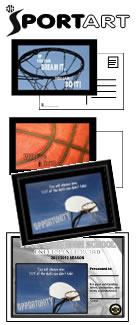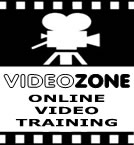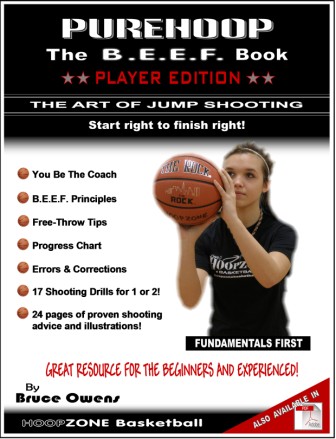 Rebounds are divided into two main categories: "offensive rebounds", in which the ball is recovered by the offensive side and does not change possession, and "defensive rebounds," in which the defending team gains possession. A majority of rebounds are defensive because the team on defense tends to be in better position (in other words, closer to the basket) to recover missed shots. Offensive rebounds lead to another opportunity to score for the offensive team, either right away or by resetting the offense. Team rebounds are credited to a team that gains possession of the ball after any missed shot that is not cleared by a single player Rebounds are divided into two main categories: "offensive rebounds", in which the ball is recovered by the offensive side and does not change possession, and "defensive rebounds," in which the defending team gains possession. A majority of rebounds are defensive because the team on defense tends to be in better position (in other words, closer to the basket) to recover missed shots. Offensive rebounds lead to another opportunity to score for the offensive team, either right away or by resetting the offense. Team rebounds are credited to a team that gains possession of the ball after any missed shot that is not cleared by a single player
Rebounding Drills
Rebounding Videos
Defensive Rebounding:
The defensive rebounder must maintain a position between the opponent and the basket. This position is commonly called "box out". As a shot is taken, the defensive player steps forward and pivots so that her rear and back make immediate contact with the assigned opponent. Since the rebounder has only one or two seconds before having to find the ball, it is important to quickly establish a position to enable "feel" of the opponent with the body and to be able to use a slide step to keep the body between the opponent and the basket. The elbows in this position are wide and almost parallel with the shoulders. They are held firm so that the offensive player cannot get by to get at the ball. The defender uses their elbows and back to know where offensive player is. The feet are slightly wider than shoulder width. The combination of wide feet and wide, strong elbows presents as big an obstacle as possible to the offensive player. The defensive player's body should be crouched with the knees bent, ready to spring upward for the ball. The head is erect and the eyes are focused on the ball.
As the rebound comes off the board, the defender leaps into the air with elbows wide and body in a slight jack-knife position. The jack-knife movement of the body throws the rear of the body backward and keeps the opponent off the defender's back. The defensive rebounder grabs the ball firmly with both hands, rolls it, and keeps it moving to prevent the opponent from gaining possession or a jump ball. Defensive rebounding should always protect ball (top priority) and then find outlet on wing. Guards call for the ball, then push up floor. Care must be taken not to move the elbows back and forth high, since this is a violation and results in loss of the ball.
DEFENSIVE REBOUNDING SUGGESTIONS
1. Each defensive player must block his opponent off the board.
2. Use a front pivot to step into the opponent to make contact.
3. The body should be crouched with arms held wide to present an obstacle to the
xxoffensive player and to be ready to go for the rebound.
4. Grab the ball firmly with both hands, roll it in your high chest, to prevent an opponent
xxfrom slapping it out. We call it, ‘Chin it’.
5. Use a wide-spread body position to protect the ball as it is rebounded. Elbows out!
6. Keep the ball moving to prevent a jump ball.
7. Pass the ball away from the congested area of the basket as soon as possible.
xx More fast break attempts occur with quick outlet passes.
8. Do not get pushed too far under the basket when trying to gain rebounding position.
Offensive Rebounding:
The offensive rebounder faces the defensive player's efforts to screen her off the boards. Realizing that the defender will turn into his path, the offensive player must attempt to get through to the basket by using quick fakes and changes of direction. The offensive player fakes left, goes right; fakes right, goes left; fakes right, left, goes right, and so on, in an effort to avoid defensive box out. However, fakes must be done quickly, for only seconds exist between the shot attempt and the rebound. The offensive rebounder who hustles toward the boards using clever fakes is difficult to block out.
The offensive player must not allow the defensive player to "feel" her with the back or elbows, or the defender will be able to slide with any change of direction that is made. If the offensive player senses the slight contact with the opponent's back that allows the opponent to "feel" her, she should step backward, then fake and cut around the box out.
- Always assume the shooter will miss.
- Block out your opponent.
- Position yourself in a strong and balanced position.
- When you go up for the rebound, jump up, wide and strong.
- Use both of your hands to get a good lock on the ball.
- As you come down, keep your body wide and strong.
- Keep the ball up, out and away from your body.
H O O P E R X R E B O U N D I N GX T I P S |
FRONTING THE LOW POST
Begin by having the offense start at the foul line and the defense stands inside the lane facing the offense. Start at medium speed with the offense trying to get past the defense into the lane. The defense blocks the offense with the arms and body. If the offense tries to charge the lane, the defense should push them off with their hands in the upper arm and shoulders of the offense. This drill lasts eight seconds and is to be repeated six times.
ASSUME EVERY SHOT WILL MISS
Perhaps the most important key to being a good rebounder, offensive or defensive, is to assume that every shot will be missed. If you do this, you will always be willing to get in position, ready to be a rebounder.
OUTLET PASS
After you get the rebound, immediately chin the ball, then make a good outlet pass. A good rebounder who can outlet the ball to the guard can start a fast break on the way to a score. This is a valuable asset to a team. Get the rebound, pivot away from the defense, and outlet to your guard for the fast break. It is a skill that is not much noticed by anyone but the coach knows how valuable you are.
DESIRE FOR THE BALL
Rebounding is a great skill to have as a basketball player. Those players that really WANT the ball and box out become the best rebounders. Take pride in rebounding. Lean back on your man and keep him out of rebounding position. A smaller player can be a good rebounder by using footwork and body position. Oh yeah, and a little heart and desire doesn't hurt.
KEEP YOUR HANDS UP
Always keep your hands up at least shoulder high when getting ready to rebound. This will allow you to be ready for the rebound that comes off the rim quickly and low. Remember this: shot goes up-hands go up!
BOX OUT
If you are real close to the basket when the shot goes up, you must "box out" and create some space to rebound. To "box out" from your defensive position: go towards your man and make contact. Pivot so you “Put your butt to their gut” and just slide with them, keeping them away from the rebound. When boxing out, keep your man from pushing you in towards the basket by keeping a low base. Wait before releasing for the ball until the last moment. Releasing too early will negate the rebound positioning you worked so hard for. Then go get the rebound!
ATTITUDE AND DESIRE
The majority of all rebounds are taken below the rim. Therefore, rebounding is not a product great athletic ability, but attitude and desire. Make up your mind that you want to rebound, go after each and every one, and make sure to master box-out techniques, and you can provide your team with a valuable asset. A dependable rebounder.
POSITIONING
The key to rebounding is positioning and concentration on the ball. Anticipate the flight of the ball. Remember that most shots rebound to the opposite side of the basket. Next, you need to concentrate on the ball, until it is safely in your hands or rebounded by someone else.
OFFENSIVE REBOUNDING
In order to get an offensive rebound, you must get the inside position on your defender, who is trying to box you out. You must outquick him, or make some kind of move to get that inside position. You can try a quick change of directions, develop a spin move, or just sweep your leg in front of your opponent.
PERFECT REBOUND
The perfect rebound is the one where everyone of your teammates and yourself box out their man so well that the rebound can be easily caught AFTER it has hit the floor. When one thinks about this "perfect rebound" concept the team blockouts get better and better.
Time to get to work,
Coach O
|





 Rebounds are divided into two main categories: "offensive rebounds", in which the ball is recovered by the offensive side and does not change possession, and "defensive rebounds," in which the defending team gains possession. A majority of rebounds are defensive because the team on defense tends to be in better position (in other words, closer to the basket) to recover missed shots. Offensive rebounds lead to another opportunity to score for the offensive team, either right away or by resetting the offense. Team rebounds are credited to a team that gains possession of the ball after any missed shot that is not cleared by a single player
Rebounds are divided into two main categories: "offensive rebounds", in which the ball is recovered by the offensive side and does not change possession, and "defensive rebounds," in which the defending team gains possession. A majority of rebounds are defensive because the team on defense tends to be in better position (in other words, closer to the basket) to recover missed shots. Offensive rebounds lead to another opportunity to score for the offensive team, either right away or by resetting the offense. Team rebounds are credited to a team that gains possession of the ball after any missed shot that is not cleared by a single player